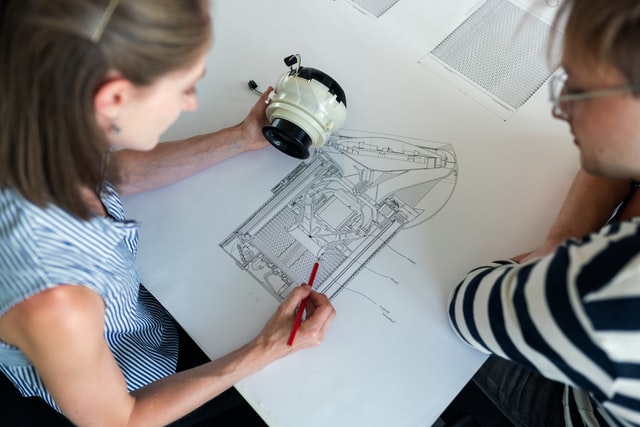Are we doing enough to encourage young women to get into engineering? Currently, it seems that much more could be done. The number of women entering into roles in the STEM industry is much lower than that of men. This disjunction is odd, considering the fact that a higher number of girls than boys achieve a grade A*-C in all STEM A-Levels except chemistry. Clearly, young women are thriving in engineering related subjects during their school years but drifting away from these passions when it comes to making choices about their careers. So, what is going wrong? And what could be done to encourage more young women to get into engineering?
Equality in the workplace
One thing that may put many women off the idea of engineering as a career choice is an uneven workforce. Without full equality in the field, women will feel discouraged from joining the industry, and the problem will be perpetuated.
As well as getting more women into the world of engineering, we also need to create an environment that will make them want to stay in their job. Tackling sexism and stereotypes within STEM industries is a crucial starting point. With many people considering it a ‘masculine’ field, women can feel intimated and undermined. According to women currently in the industry, positive changes are being made for women in the workplace. PPE (protective clothing) for example, has now been adapted to fit women rather than the previous ‘one size fits all approach’. There are now options with higher waisted trousers and tops that fit better. As well as this, there are an increased number of female toilets and other facilities for women in engineering and construction sites. This creates a more manageable and comfortable environment for women.
Getting women into engineering
The engineering industry is quickly adapting to disprove dated gender stereotypes. There is still a long way to go, but we are headed in the right direction. The effort to increase the number of women in such roles needs to take a two-pronged approach: encourage young girls into STEM subjects and change the landscape of the industry to better facilitate female workers. One engineer we spoke to (Holly, 25) said, “I think, due to the nature of the work, construction and engineering may always attract more men than women, but I also think that imbalance puts women off. Once there is a critical mass of women in the workplace, more would join and, critically, stay.” Essentially, the more women that go into engineering roles, the more women will join in the future, following their example.
Encouraging more young women into STEM subjects is he first part of the battle. In 2018, WES revealed that only 46.4% of girls aged 11-14 would consider a career in engineering, compared to 70.3% of boys. These figures decreased with age: only 25.4% girls aged 16-18, compared to 51.9% of boys, said they would consider a career in engineering. Furthermore, only 22.2% of students starting A-Level Physics in 2018 were female. One way to remedy this is by STEM ambassadors going into schools to raise awareness of the opportunities available.
STEM volunteers both inspire young women and make them aware of potential career paths. Having positive role models in their chosen career path will make a monumental difference in how they approach the role. Other initiatives like Women into Construction champion young women and encourage them to pursue their goals. This not-for-profit organisation provides “bespoke support to women wishing to work in the construction industry, and assist contractors to recruit highly motivated, trained women, helping to reduce skills gaps and create a more gender-equal work force.”
Niftylift, a leading cherry picker company, have set up an inspiring programme called Women in Engineering Week. The Women in Engineering Week is aimed at young girls in Year 9, 10, and 11. Last year, students and teachers from Radcliffe, Denbigh, Bridge Academy, Oakgrove and Stantonbury International school were invited to Niftylift so that they could learn a bit more about the world of engineering. The aim was to highlight the fundamental role engineers play in our society and inspire young girls to pursue engineering careers. In response to the visit, Laura Cain, a teacher from Radcliffe School, said, “Fantastic afternoon at Niftylift at their women in engineering event. Students came away buzzing about the roles available. A brilliant example that careers are open to both genders.”
Of course, there is still a long way to go, and more companies need to follow in the footsteps of Niftylift, WES, and Women into Construction. According to the Guardian, “the UK has the lowest percentage of female engineering professionals in Europe”, but the percentage is increasing. Some sectors, such as environmental engineering, and design, attract larger numbers of women than others. The interest in this industry is evident in young women throughout the country. We must cultivate these skills and ambitions in order to create a more equal industry and utilise this untapped potential.


